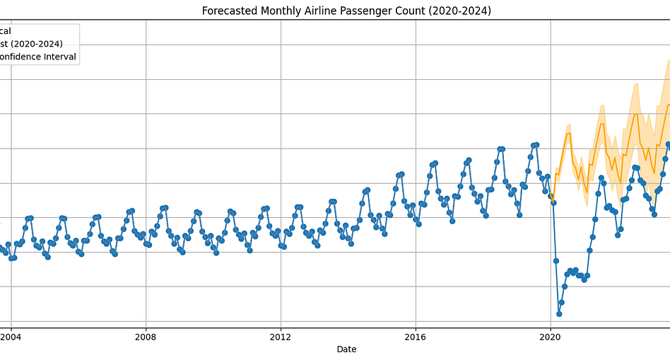Medium
2w
285

Image Credit: Medium
Forecasting Airport Traffic with SARIMA: A SeaTac Case Study
- A study used SARIMA to forecast SeaTac Airport passenger traffic, suggesting a recovery by 2023.
- The dataset comprised monthly passengers from 2003 to 2024, with modeling focused on pre-pandemic data (2003-2019).
- SARIMA, chosen for its seasonal pattern handling, consists of non-seasonal and seasonal components.
- To achieve stationarity, differencing was applied to the data through SARIMA's d and D parameters.
- Augmented Dickey-Fuller test confirmed non-stationarity, leading to first-order and seasonal differencing.
- Auto_arima function determined the SARIMA model parameters for the data.
- The trained SARIMA model forecasted passenger counts for 2020–2024.
- Actual passenger counts by 2023 aligned with the model's forecast, indicating a recovery in demand.
- Passenger counts mostly fell within the 95% confidence interval, consistent with pre-COVID trends.
- SARIMA was effective in forecasting stable, seasonal patterns but less suited for sudden disruptions like COVID.
- The study showcases SARIMA's ability to capture long-term air travel trends.
- Forecasting methodologies like SARIMA allow for interpreting future air travel demand with historical data.
- Differencing in SARIMA does not erase trends but highlights changes for interpretation.
- The SARIMA model reflected SeaTac's recovery post-pandemic, aligning with historical trends.
- Beyond COVID disruptions, SARIMA remains valuable for modeling consistent patterns and future directions.
- By 2023, SeaTac's passenger traffic had realigned with pre-pandemic growth patterns, indicating a full recovery.
Read Full Article
17 Likes
For uninterrupted reading, download the app